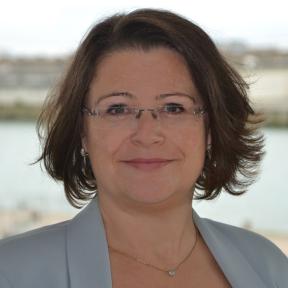Unmet Medical Needs require sustainable and innovative solutions

Unmet Medical Needs require sustainable and innovative solutions
In the ever-evolving landscape of healthcare, addressing unmet medical needs (UMN) has taken centre stage. As European policymakers and regulators deliberate on the EU-reform of the pharmaceutical legislation, it is essential to recognise the potential of drug repurposing as a sustainable and innovative solution. That is why the Anticancer Fund is being a leading voice for drug repurposing in oncology.
What is the context?
As the EU is reforming the Pharmaceutical Legislation an online public consultation was organised. The Anticancer Fund participated in this consultation, to make sure that the patients would be top of mind, when policymakers and regulators are reviewing the legislation. We wrote a position paper focusing on the unmet medical needs of patients and suggested to consider drug repurposing as an additional strategy to increase the number of valuable treatments. This position paper was shared with Members of the European Parliament (MEP’s), the Belgian authorities and peer organisations advocating for patients.
What is drug repurposing?
Drug Repurposing (DR), or the strategy for identifying new uses for approved drugs beyond their original indications, is a prominent strategy in the world of drug development. Even before COVID-19 brought it to the forefront, DR demonstrated its potential to reduce both development time and cost. However, it is important to note that while DR is a valuable approach, it should not be pursued at the expense of 'de novo' development efforts. Instead, it should complement these efforts to expand the number of treatments available to patients.
Drug repurposing versus unmet needs
Unmet medical needs (UMN) are sometimes commercially unappealing. This lack of interest is due to several factors, such as the new indication falling outside the therapeutic focus of the patent holder or the rarity of the condition, resulting in projected revenues too low to justify the cost of development. In the case of generic drugs, market authorisation holders (MAHs) (1) face limited incentives for clinical research as competition drives prices down, making it difficult to recoup costs. Moreover, generic competitors can often capitalise on the approval of a new indication, as generic drug prescriptions are not brand-based.
How to overcome these hurdles?
To address these hurdles, private-public partnerships, as witnessed during the COVID-19 pandemic, have proven to be effective. Patient-centred, independent clinical trials that evaluate multiple existing drugs simultaneously, often referred to as platform trials, have delivered meaningful results. However, non-commercial entities conduct the majority of clinical trials for existing drugs in high-UMN areas, such as rare cancers. While their efforts are commendable, they often lack steady funding, regulatory support, and incentives for making these treatments accessible to patients.
Making non-commercial research accessible to patients
The proposed European pharmaceutical legislation takes a step in the right direction by allowing non-profit organisations to submit data to the European Medicines Agency (EMA) or a national Competent Authority for scientific evaluation of the benefit-risk of using a medicinal product with a new therapeutic indication that addresses an UMN (Article 48 of the proposed Regulation). While this enables to add the new indication to the label, it does not guarantee patient access. Market authorisation holders (MAHs) must also submit the datafile to Health Technology Assessment bodies (HTAs) (2) for clinical assessment and to National Competent Authorities for reimbursement. Alternatively, the European Commission could establish an automatic pull procedure linked to Article 48.
In conclusion, non-commercial research using approved drugs and drugs still under development can offer part of the solution for UMN. Public investment in well-conducted investigator-driven clinical trials can result in affordable authorised medicinal products that can be used beyond the terms of the original Marketing Authorisation, with minimal investment from the MAH. As European policymakers chart the future of drug development in the pharmaceutical legislation, embracing DR and patient-centred, independent clinical research is a step toward a brighter, healthier future for all.
(1) A market authorisation holder is the company or legal entity that has the authorisation to market a medicine in one or more European Union Member States.
(2) Health Technology Assessment bodies (HTAs) evaluate new health technology. They have to assess whether it works better, equally well, or worse than existing alternatives. For this, they typically need to assess the therapeutic effect of the drug, but also potential side-effects, influence on quality of life and means of administration.
HTA also assess other aspects of the use of the technology, for example its cost implications for the patient and its impact on the organisation of healthcare systems in the administration of treatment. It is therefore a multidisciplinary process that reviews the medical, economic, organisational, social, and ethical issues related to the use of a health technology.
This is the second blog we write on the topic. You can read our first one here.

